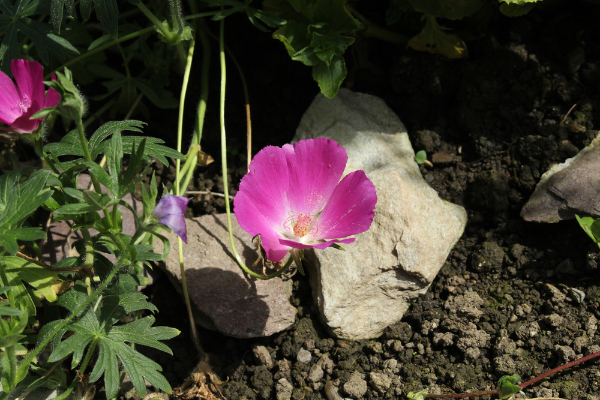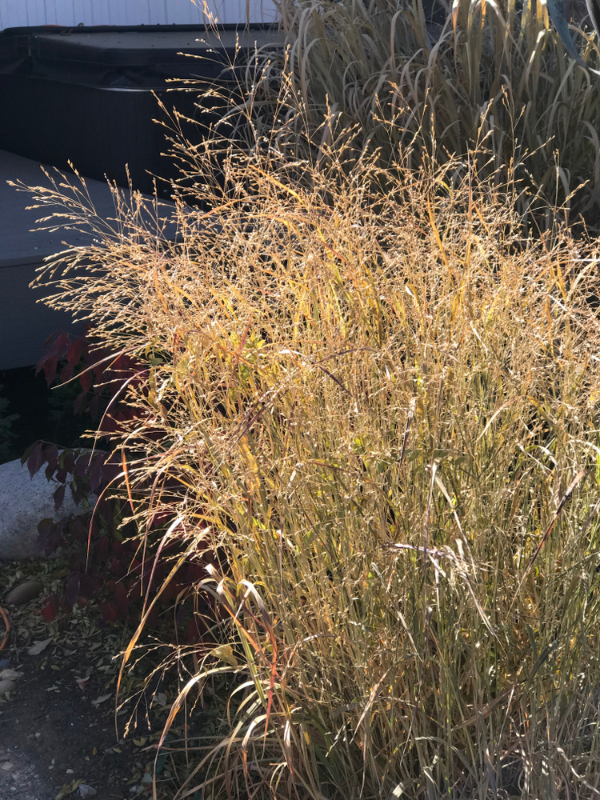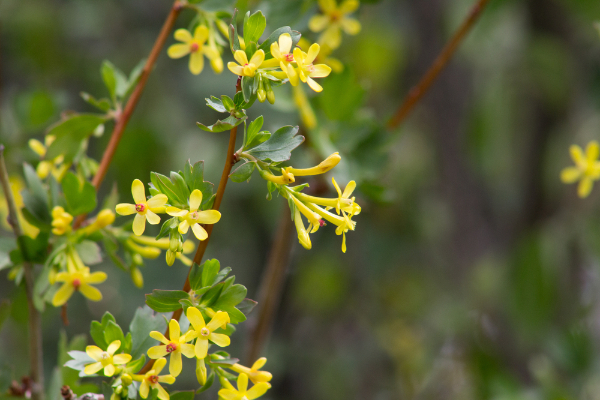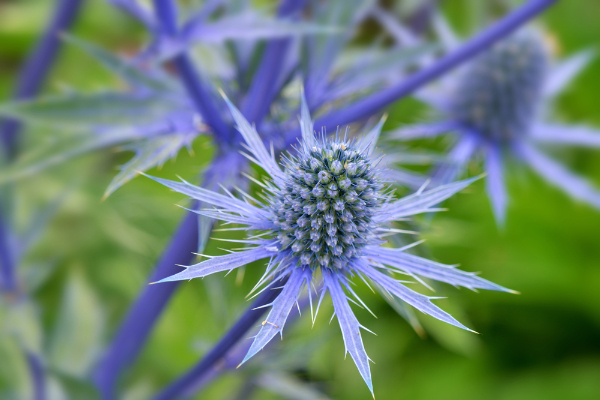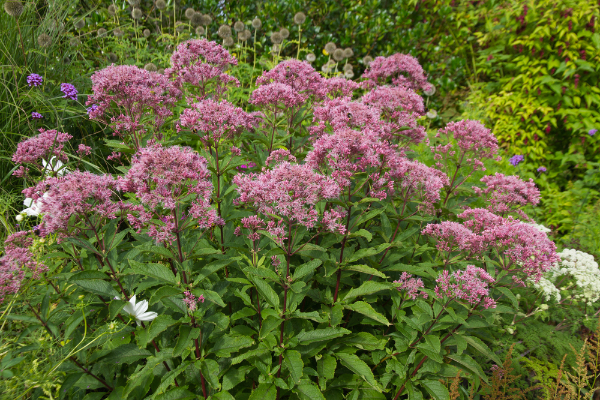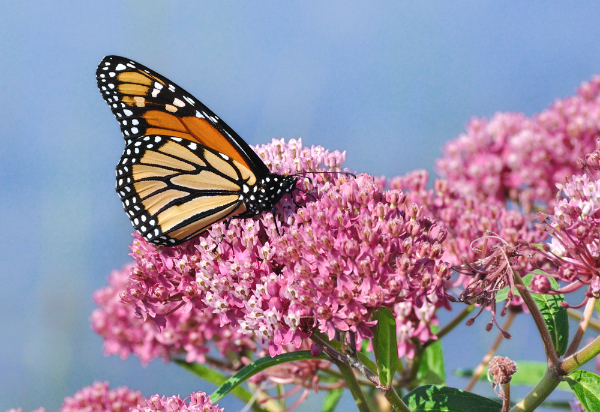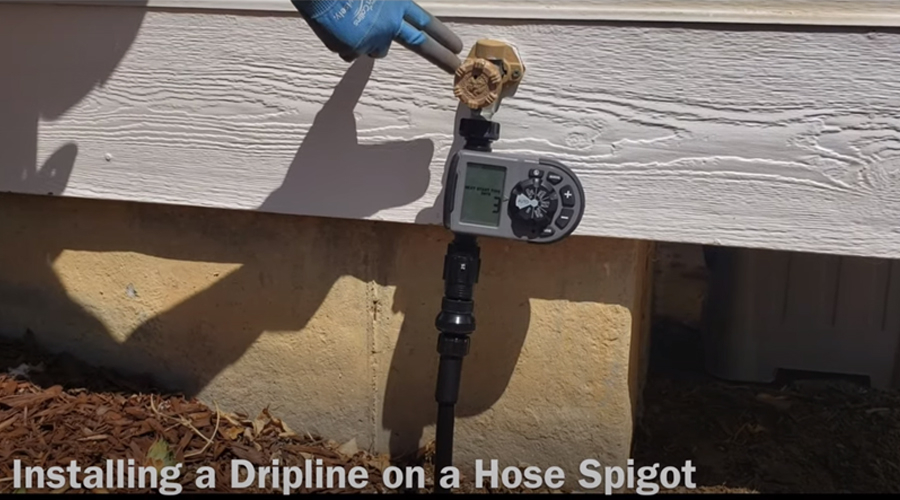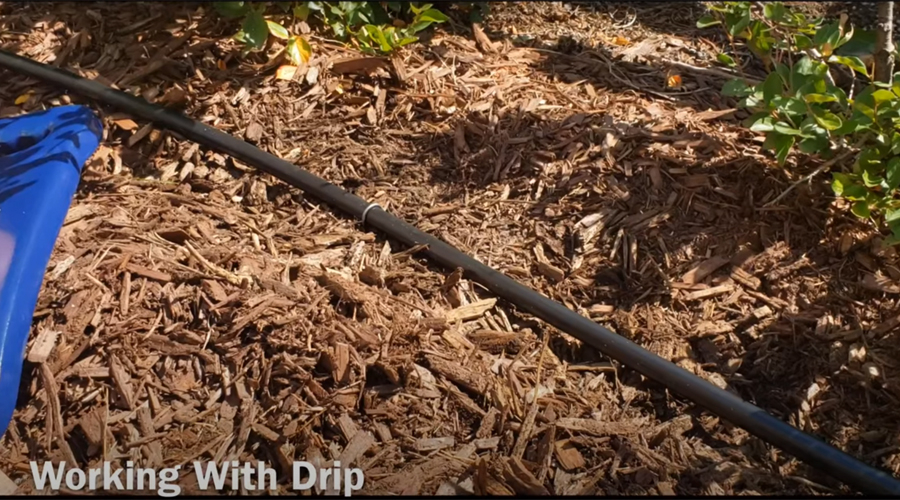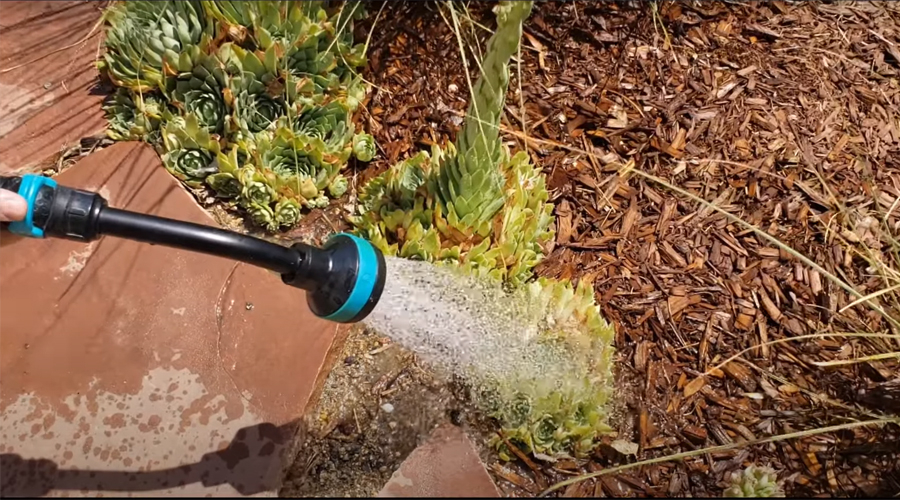Xeriscape Garden Party#
The Xeriscape Garden Party is coming up in June!
Saturday, June 14 • 10 a.m. – 1 p.m. • 300 Laporte Ave.
This year, we'll be part of FoCo EcoFest, an event centered around sustainability and climate initiatives!

LEARN
Learn about water-wise landscaping from the experts – local professionals, non-profits, City staff and Colorado Master Gardeners will all be on hand.
Class information below.

PARTY
Celebrate the art of landscaping with family-friendly activities, live art demonstrations, live music, a prize drawing, a coffee truck and more!

SWAP
Dig up, divide and donate pollinator plants from your own garden. No plants to swap? No problem! You do not need to donate plants to take new ones home.
Learn more about the NoCo Native Plant Exchange including plant donation guidelines and volunteer opportunities here
Free classes available at this year's FoCo EcoFest!#
Quick Overview of Schedule#
| Class | Time |
| New Waterwise Plants and Gardening For a Changing Climate | 10:15-10:40 a.m. |
| Heat Pump 101 | 10:45-11:10 a.m. |
| Firescaping: Green Solutions to Save Water and Protect Property | 11:15-11:40 a.m. |
| Solar | 11:45-12:10 p.m. |
| Low Water + Low Maintenance Gardening | 12:15-12:40 p.m. |
Detailed Overview of Schedule#
| Class | Time | Class Description | Presenter |
| New Waterwise Plants and Gardening For a Changing Climate | 10:15 - 10:40 a.m. |
Learn about the latest sustainable planting ideas, from perennials to shrubs and trees, and the best ways to incorporate them into your garden or landscape. |
Plant Select® Executive Director, Ross Shrigley, is a seasoned gardener with a breadth and depth of experience in the world of horticulture. Plant Select® is a nonprofit collaboration of Colorado State University, Denver Botanic Gardens, and the green industry. |
| Heat Pump 101 | 10:45-11:10 a.m. |
The invention and continual development of Heat Pump technologies is the key enabler for the essential energy transition we must pursue to combat climate change. This talk will cover:
|
Tony has a passion for realizing people’s potential and in particular making a sustainable difference for his clients. Before becoming a full -time professional trainer and coach, Tony held a variety of scientific and change management positions in his 21 years at BP. It was his roles in Change Management that led him to leave BP to concentrate of helping many organizations explore organizational and individual change programs to pursue continuous improvement and help realize their full potential.
Tony believes in “inside-out learning”. What he means is, people need to experience or ‘see’ the issue for themselves and internalize it, before they are ready to make a change and externalize that change through new behaviors and actions.
Since retiring, using his scientific background, Tony has focused his attention on addressing Climate Change. With plenty of help, he has designed and built a net-zero home in Laporte, Colorado, and now volunteers for Citizens Climate Lobby and GoElectric Colorado. He helps the community and individuals in developing action plans to improve their homes’ energy efficiency and to electrify with the aim to eliminate GHG emissions.
Education, Qualifications and Certification:
· BSc. Materials Sciences, Imperial College, London.
· DPhil. Chemistry, Oxford.
|
| Firescaping: Green Solutions to Save Water and Protect Property | 11:15 - 11:40 a.m. |
The risk of wildfires to Front Range communities is growing, and residents can take measures to prepare. Learn how to create an attractive, green, low-water landscape that can protect your home. |
Kevin Lyles is a Landscape Architect and Certified Wildfire Mitigation Specialist (CWMS) who designs parks, trails, and landscapes for sustainability and climate resiliency. He recently started a small nursery to promote the use of native, water-wise, and fire-wise plants. |
| Solar | 11:45-12:10 p.m. |
What's up with solar and battery storage? Hear the basics of solar and battery storage, how solar and battery storage align with Our Climate Future, as well as incentives and resources for residential customers. |
Leland Keller has managed Residential Solar, Community Solar and Battery Storage Programs at Fort Collins Utilities since 2017. He began consulting in the field of energy efficiency and demand management in 1992 and has supported impact and process evaluations of residential and commercial programs for some of the largest investor-owned utilities in the United States. From 2001 – 2013, he provided best practices research and syndicated reporting to electric and gas utilities across North America regarding customer-facing programs, distributed energy resources and efficient technologies. Leland holds a bachelor’s degree in Mechanical Engineering from the University of Virginia, completed graduate-level work at the University of Colorado, as well as solar and storage advanced courses through Solar Energy International. |
| Low Water + Low Maintenance Gardening | 12:15 - 12:40 p.m. |
Learn the principles of Low Maintenance Gardening and how to foster an ecologically sustainable landscape while lowering your inputs. |
Tessie Walters and Andrea Work are horticulturists in Fort Collins with a focus on low water gardening and all things sustainability. They work with Blue Spruce Horticulture to create unique, functional, and artistic landscapes that thrive in the high plains. |
This event is brought to you by:#

Past Garden Party Webinars and Resources#
-
By Illeane Podolski, Colorado Master Gardener (Reprint from NoCo Bloom)
There are many preconceived ideas and myths about xeriscaping. These myths highlight some of the most common misconceptions of xeriscaping in Colorado.
Myth 1: Xeriscaping is 'no maintenance' gardening
This is not strictly true. But choosing plants that can grow well in the waterwise landscape with as little additional water as possible allows for their adaptability, requiring much less maintenance than the plants in a typical traditional garden. There will still be some maintenance, such as dividing perennials, weeding, spacing, or removing vigorous plants, replacing mulch, and pruning. Smaller turf areas requiring less water will mean less mowing and less fertilizing.Myth 2: Xeriscaping gardening is like a moonscape or desert
Xeriscape is not “Zero-scape.” It is not a dry and dusty environment with no water and only rocks. These xeric gardens are full of life with small creatures, insects, colorful flowers, both native and non-native, ornamental grasses, shrubs, and trees. Many flowers that grow well in xeric gardens produce nectar to attract insects and bees. Gardening with less water doesn’t mean water-wise gardens are desert-like.Myth 3: Xeriscape gardens are boring
Xeric gardens offer year-round interest! There are many visual pleasures in these landscapes such as plants in colorful combinations, grasses, shrubs, textures of mulch and gravel, and interesting rocks. Garden sculptures and statues can also be added.Myth 4: Without rocks, cacti, and gravel you can't have a xeriscape
Boulders and rocks do add structure and height to any garden, but they don’t have to be the focal point of the xeriscape. Water-wise gardens depend on the principles of design, just as other types of garden landscapes. Our drier climate gardens have evolved from this image of rocks, cacti, and gravel use. There is wider availability of native and adapted plant material from high altitude dry climates, as well as various mulches, that make the xeric garden more about the plants than rocks, cactus, and gravel.Myth 5: Only native plats thrive in xeriscaping
Native plants have adapted and tolerated the intermountain and high plains gardens, but there are many types of plants, shrubs and trees for xeric landscaping. Nurseries and the Plant Select® program have helped offer gardeners so many plant choices. They range from colorful to more subtle. Annuals that require less water can be mixed in seasonally as well. -
By Katie Collins, Fort Collins Utilities
Native plants are the stars of the water-wise garden. With careful planning and diligent establishment watering, natives can save water (and time spent watering!) for years to come.
Q: Can I mix natives with non-native plants in the garden?
A: Certainly–this is where planning is crucial. Just as full-sun plants are grouped with other full-sun plants in a design, place plants with similar water needs together. This is known as ‘hydrozoning.’ A hydrozoned landscape prevents under- and over-watering.Q: Do I need to water new native plants?
A: Absolutely! Any freshly planted plant–whether tree or grass, native or not–needs regular watering in the first year, with no exceptions. In year two, it is critical to gradually reduce the frequency of watering.Q: How much should I water my established native plants?
A: Do a little research to understand where the native plants originated. For example, native plants found near bodies of water indicate a need for more supplemental water in the home landscape. That doesn’t mean digging a pond in the backyard; instead, consider placing moderate water users in spots where moisture is more abundant, such as near downspouts or not far from a hose spigot. Native plants that originated in dry locations are adapted to dry conditions and may not need any supplemental water once established. -
Purple Poppymallow (Callirhoe involucrata)#
![purple flower]()
Poppymallow blooms nearly all season long and can cover a lot of ground, outcompeting weeds while providing a beautiful show. 1’H x 4-5’W
Switchgrass (Panicum virgatum)#
![A tall golden grass.]()
Standing 3 to 4 feet tall, Switchgrass is a stately addition to the landscape. These delicate seed heads dance gracefully in the wind and are lovely against a Colorado sunset backdrop. 2-3’W x 3-4’ H
Golden Currant (Ribes aureum var. aureum)#
![Yellow flowers]()
Native and delicious? Check and check. Golden currants have attractive yellow blooms in spring and attractive fall foliage. These plants require a bit more water, so locate them near a gutter downspout. Try to grab a taste of the sweet berries before the birds do! 4’ W x 6’ H
Sea Holly (Eryngium planum ‘Blue Cap’)#
![A blue flower with narrow petals]()
A perennial that provides bountiful flowers for a long bloom season. Sea holly has open umbels of prickly steel blue flowers that can reach 36 inches in height. A very hardy species with a Hardiness Zone of 4-9, it’s perfect for Northern Colorado gardens in that it tolerates hot, dry sites and poor soils, even those high in salts.
Joe Pye Weed (Eupatorium maculatum)#
![Bunches of small pink flowers]()
Joe Pye weed can grow up to six feet tall with strong stems that hold crowned clusters of bright pink flowers in late summer and are magnets for dozens of species of butterflies.
Swamp Milkweed (Asclepias incarnata)#
![Pink flowers with a butterfly]()
Swamp milkweed grows upright about two to three feet with slender, willow-like leaves topped with round, pink-to-rose-colored flower clusters. This perennial variety is known to attract many native butterflies and bees and is important in feeding Monarch caterpillars.
-
Xeriscape Resources:
- Xeriscape Incentive Program (XIP)
- Xeriscape Resources
- Xeriscape Garden Tour
- Plant List
- Residential Sprinkler Equipment Rebates
- Sprinkler Checkups
- Xeriscape Professionals
- Demonstration Gardens
- Garden In a Box
Additional Resources:

Questions? Email xeriscape@fcgov.com.
Did You Know?
You can reduce ‘vampire’ power waste by unplugging electronics that are not in use or plugging them into a smart power strip.
Home office and overall electronics typically use very little electricity (1 cent or less per hour on average).
You can recycle your old refrigerator or freezer and have it hauled away for free!
